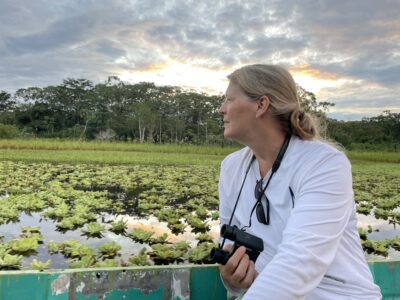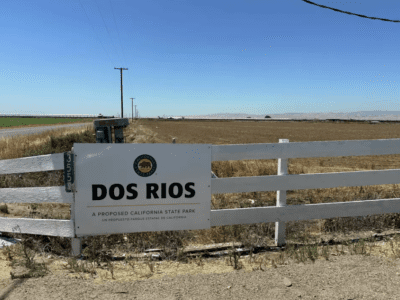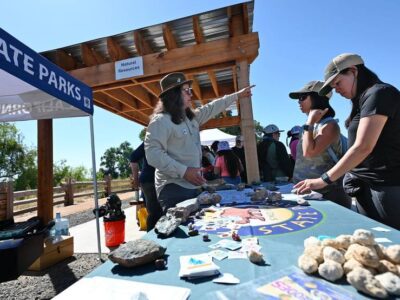There’s no way around it: If we’re going to restore California at the pace and scale required to boost imperiled wildlife on the edge of extinction and buffer communities from the worst impacts of climate change, we’re going to need native seeds. A whole lot of them.
From California poppies to bunchgrasses, restoration-quality native seeds and plants aren’t always widely available, especially when they need to be regionally adapted and offered in landscape-scale quantities.
As River Partners aims to double our pace of restoration statewide this decade, Heritage Growers, a new native seed and plant supply venture of River Partners, will ensure we won’t run out of materials to plant.
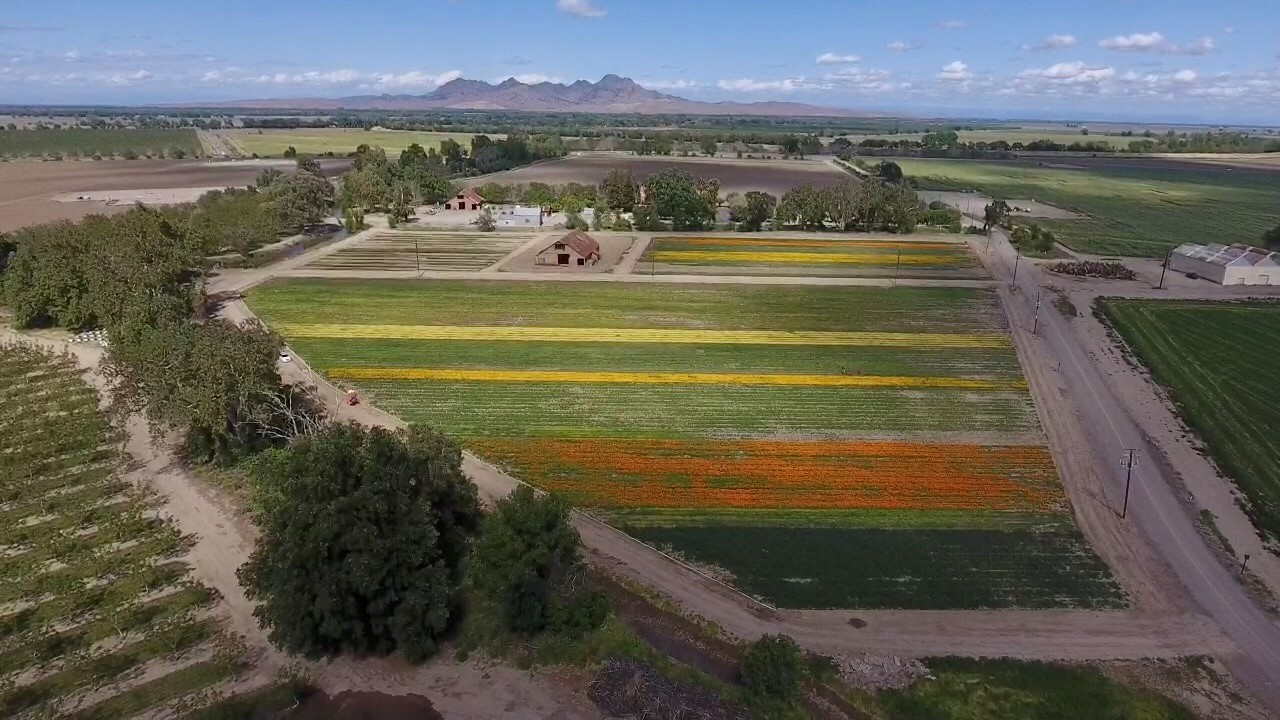
We’re not the only ones who dream about fields of native wildflowers and purple waving grasses. California’s Natural Resources Agency’s ambitious “30×30” goal to restore 30% of California’s land and coastal waters by 2030 is a call to action to grow acres and acres of native plants.
This spring, the team at Heritage Growers is in their first season of growing out native seed for restoration projects at scale. Operations Manager Michele Ranieri notes one of the challenges has been knowing when seeds are ripe and when to harvest. Since native plants have adapted creative ways to survive, they don’t all ripen at the same time, unlike most commercially grown crops.
“Farming native seeds is a tiny niche,” says Ranieri. “There’s not a lot of people with this specific knowledge. You have to crack the code, and there’s a million factors at play.”
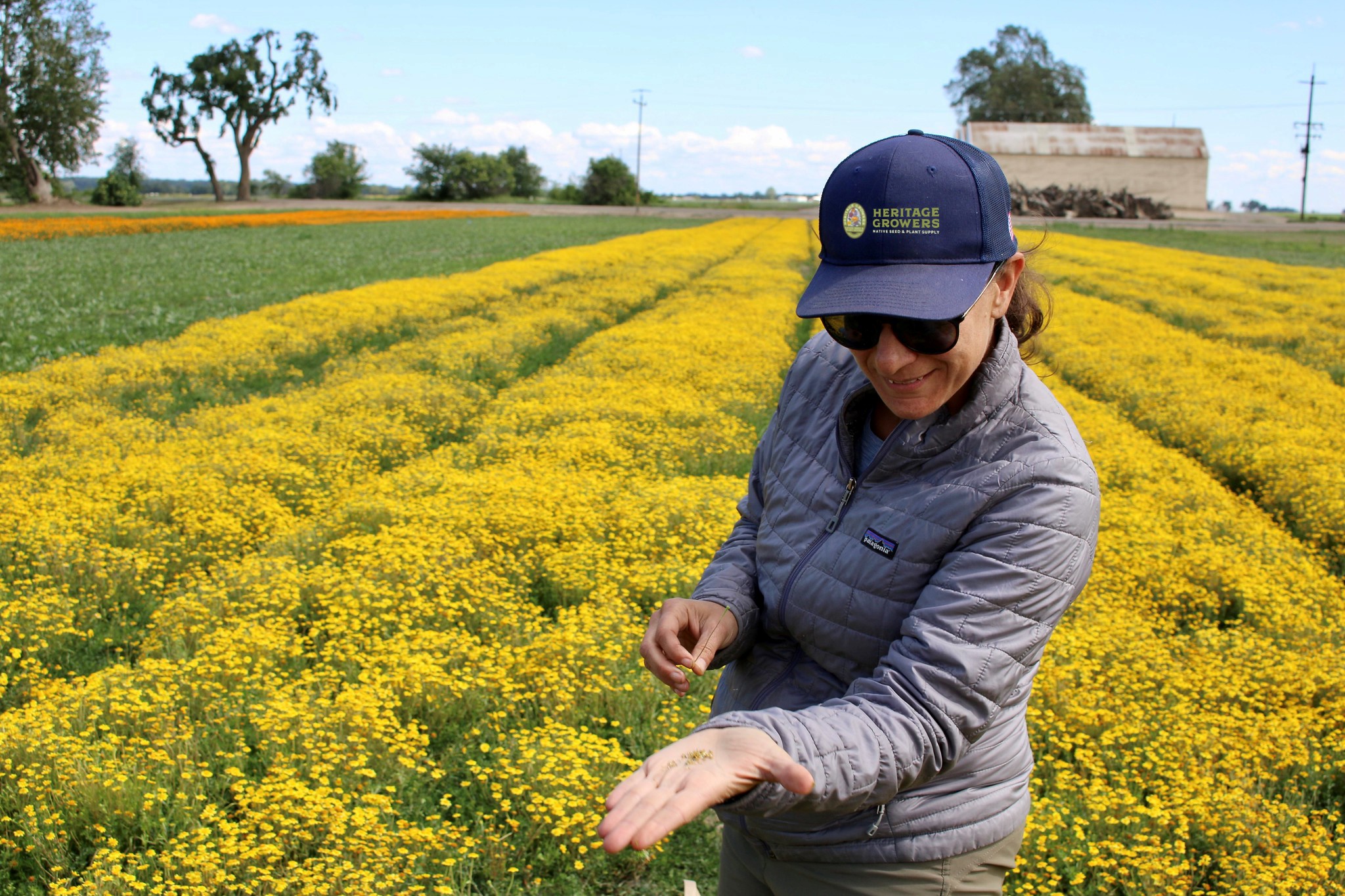
To assist the steep learning curve, the team at Heritage Growers is carefully documenting every step of the process from seeding and germination to flowering and setting seed. By recording data and taking photographs of the plants’ stages, they’re creating a manual that can help guide the process for future harvests.
General Manager Pat Reynolds notes, “There’s incredible value in documenting the process and learning. It means we will be able scale up production and habitat restoration with native plants that are healthy and strong.”

Joan Bosque, Native Seed Production Assistant, photographs plants’ progress when surveying fields using her smartphone and the back of her clipboard (see more of Bosque’s photos below). She loves seeing pollinators attracted to the fields.
“Seeds don’t happen without pollinators,” Bosque says.
Her photography is also how she shares her love of plants and seeds. “To protect something, you have to understand it and love it. And part of that protection is sharing that love. That’s how we’re going to make sure places are protected and foster land restoration to regrow our amazing natural resources.”
Heritage Growers not only supplies the highest-quality native seeds and plants, but they bring unparalleled passion and expertise to make restoration projects thrive. To partner with them for locally adapted native seeds and plants, contract grows, custom seed mixes, and more, contact Heritage Growers today.
Keep scrolling to check out what’s growing this spring at Heritage Growers’ farm in Yolo County.
Growing Native Seeds for Vibrant Landscapes











